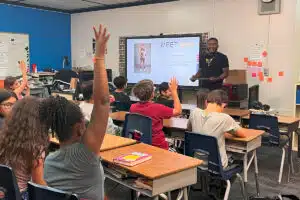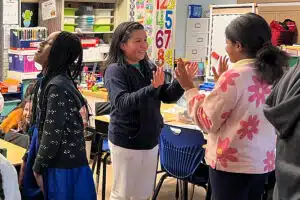
3 Effective Approaches to Enhance Events, Lessons and Meetings
At kid-grit, we are huge fans of CASEL (Collaborative for Academic, Social, and Emotional Learning).
It’s our birthday, we made it. We are five years old! kid-grit was launched in 2018 with a curriculum designed to build resilience in youth. We knew it and then we witnessed it. A worldwide pandemic taught us that social emotional learning is not just nice to have for kids, it is an obligation for every school, business and family. Everyone needs the skills to thrive in this fast-paced, technology-filled world we live in. To say it has been a journey is an understatement. We are the little engine that could.

There are so many beautiful kid-grit stories to tell from these first five years. If you have been following us, you have most likely seen them on social media or in a blog like this one. In this important anniversary edition, we want to share what we have learned on this journey.
1. We have learned there is a need for credentialing institutions to teach SEL to anyone focused on serving youth. We see challenging behavior in schools, and educators being asked to manage it. The solution is simple: human connection must be in place before content can be embraced. Students need a safe place physically and emotionally to learn. The teacher needs to be as confident with teaching an academic lesson as they are with building a relationship so that the doors to learning can be opened and stay that way. Credentialing institutions need to support pre-service teachers with more than basic classroom management strategies and include relationship building frameworks as part of the strategy.
2. We have learned that access to information online and time spent on devices compromise youth behavior. There are consequences for spending too much time online. Many young people are processing too quickly, becoming complacent and uninterested in learning. While there are benefits to digital literacy, young people often lack good decision-making skills. These skills are necessary when young people learn about drugs or sex education and help them make healthy choices. We must help students learn to manage behaviors, interpret social media, the news and images, and help them regulate how much time they spend on devices.
3. Our job at kid-grit is to care for the educator, inspire them and empower them with their own SEL and wellness practices before entering any learning environment. We did this pre-Covid, and our professional learning services are even more desirable now. To be successful in facilitating SEL, educators need to learn by experiencing the same practices that the student curriculum offers.

4. Schools and youth programs with leaders who practice and share SEL are more likely to develop a thriving culture of learning and positivity. The more stakeholders included in SEL practices (families, all staff, local partners, public servants, etc.), the more a community can flourish. Leaders must have this vision and collaborate with their team to pursue it.
5. SEL is not a quick fix. It is not just one icebreaker or reflection. It is a life skill, a commitment to healthy behaviors, a mindset, an opportunity, a method, and a bridge to world readiness. It is for every kind of child, marginalized or privileged, and equally for every adult and family. SEL is for everyone.

The first five years were exhilarating and difficult, but we remain steadfast. We will continue to find ways to encourage educators as they shape the future.
To learn more about kid-grit contact us at info@kid-grit.com.

At kid-grit, we are huge fans of CASEL (Collaborative for Academic, Social, and Emotional Learning).


Here at kid-grit, we had a wonderfully crazy month in October! Check out this blog post to hear more about what we were up to.